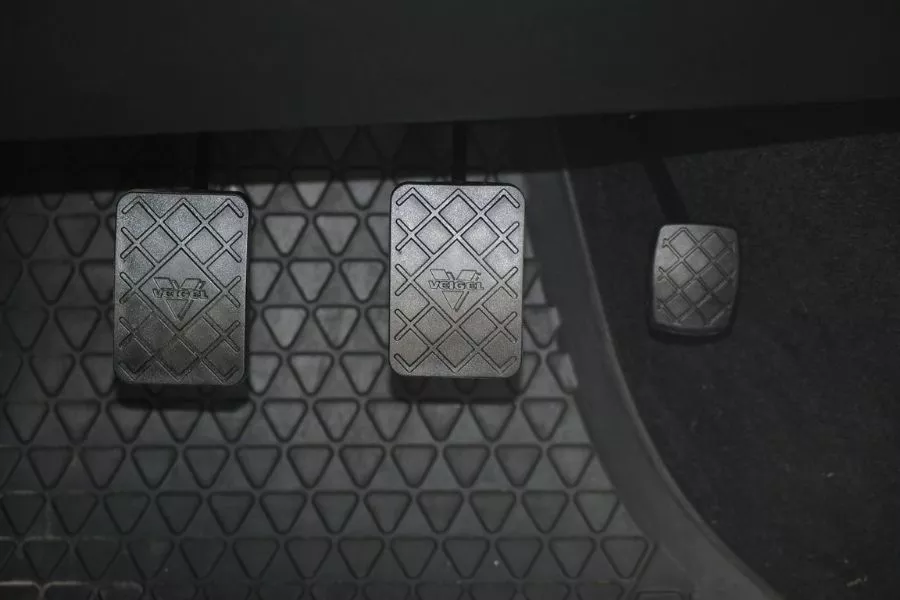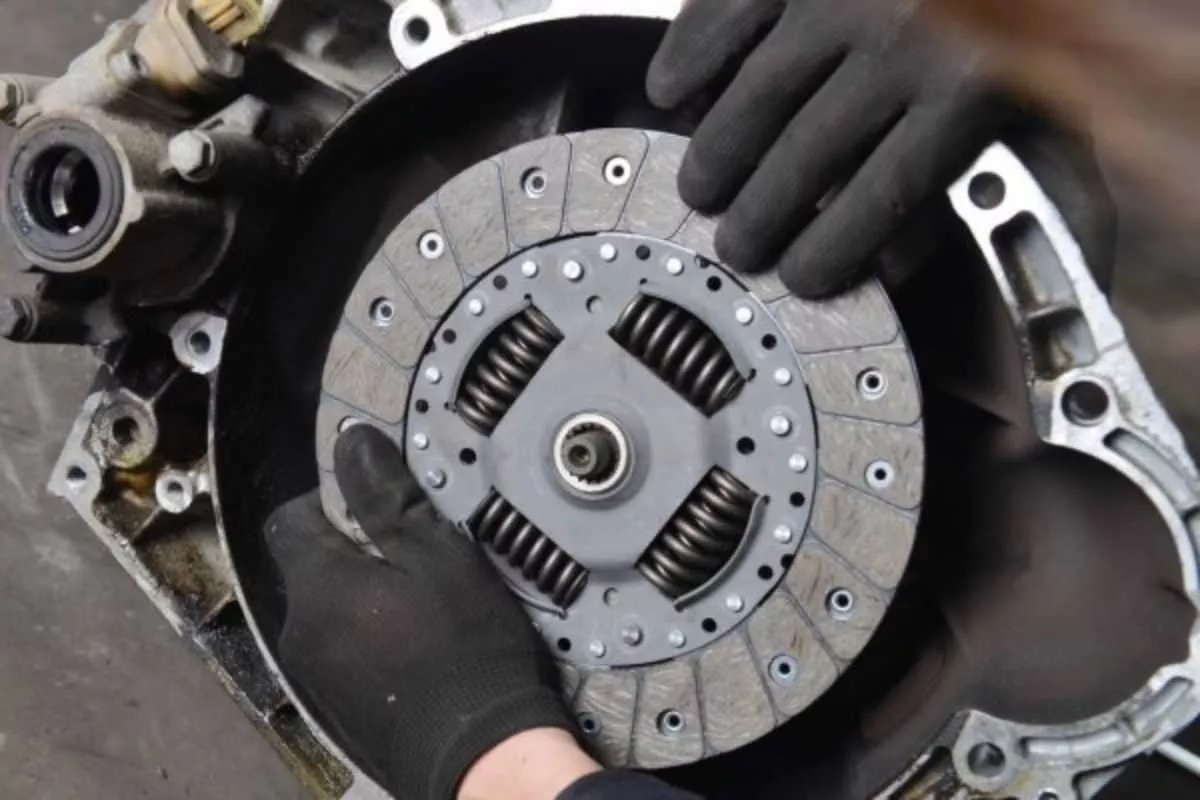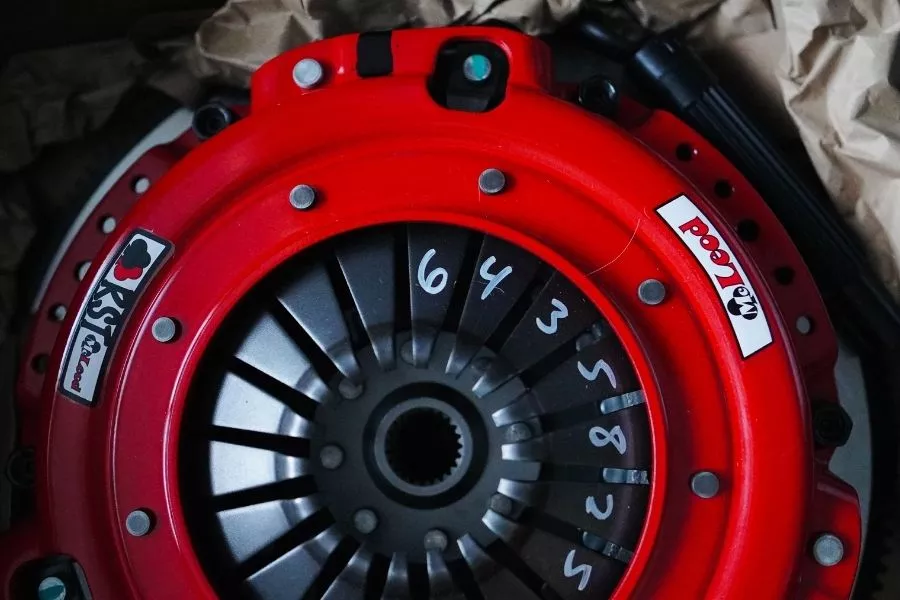What is the purpose of a clutch?
We know that the engine produces power through combustion, where a mixture of fuel/air is ignited for every cylinder. The power produced from this process is then sent to the wheels through the transmission.
A transmission consists of a set of gears that is essential in moving the vehicle forward, depending on the road condition. Changing gears while the engine is continuously cranking will damage your transmission system. As such, a clutch is installed and its function is to temporarily disconnect the transmission from the engine.

A clutch disconnects the transmission from the engine for changing gears
Both manual and automatic transmission cars are installed with a clutch. However, only manual transmission cars come with a clutch pedal that uses hydraulics to disconnect the transmission from the engine. On automatic transmission cars, the gears are shifted automatically depending on various factors such as speed and throttle.
So how do cars installed with a manual transmission work? To find out, we need to be familiar with the different parts of a clutch system and its functions. Replacing a clutch system can be expensive so we have also listed some ways you can help keep it in good condition.
Clutch parts and functions
1. Flywheel
The first part of a clutch system is the flywheel. It is connected to the rear of a crankshaft, which means that it rotates at the same speed as the revolutions per minute (RPM) of the engine. A flywheel is also installed in a clutch system to reduce the vibrations coming from the engine, providing you with a smoother driving experience.
The reason why a flywheel is incorporated in a clutch system is that it serves as a mounting surface for the clutch cover. In simpler terms, a flywheel is a medium for the clutch and the engine so that the power can be transferred to the gears and then to the wheels.
2. Clutch Disc
A clutch disc, also called the clutch plate, is always connected to the input shaft of a transmission where the gears are installed. If you step on the clutch pedal, the clutch disc will be disconnected from the engine. This is the reason why power will not be delivered to the wheels even if you put your foot on the gas pedal while stepping on the clutch pedal.
Clutch discs come with various parts to provide a better and smoother driving feel. There are grooves to help cool the plate, torsion springs to help eliminate excessive vibrations coming from the engine, and input shaft splines to seamlessly attach the input shaft to the clutch disc.

A clutch disc comes with grooves and torsion springs that provide improved comfort
3. Clutch Release Bearing
The function of a clutch release bearing is simple. It engages and disengages the rotating diaphragm spring. If the rotating diaphragm spring is engaged, then the clutch disc will rotate. But if the rotating diaphragm spring is disengaged (or clutch pedal is pressed), then the clutch disc will be disconnected from the engine.
A clutch release bearing is linked to the clutch release fork. What the clutch release fork does is it connects the clutch pedal through hydraulics to the clutch release bearing. This means that if you step on the clutch pedal, it moves the clutch release fork which ultimately engages/disengages the clutch release bearing.
4. Clutch cover assembly
There are three main parts of a clutch cover assembly, namely the pressure plate, diaphragm spring, and cover. The pressure plate is bolted to the flywheel to help the clutch disc rotate. Meanwhile, the diaphragm spring is a large and round spring steel that presses onto the pressure plate whenever the clutch pedal from the cabin is not stepped on.
The last part of a clutch cover assembly is its cover. It houses the assembly together. There are also bolt holes around the clutch cover to dampen some of the vibration and pressure when the engine is connected to the transmission.

A red clutch cover adds a sporty look
Clutch: Maintenance Tips
As said earlier, a clutch is one of the most expensive components of your car to replace. As such, it is recommended that you take care of and maintain your car’s clutches to avoid a frequent visit to your local automotive shop.
The first and most common way to maintain a clutch is to never ride it. What it means is don’t step on the clutch pedal halfway for an extended period of time. Riding your clutch will only burn it, causing it to wear out faster. If you find yourself stopped at an intersection waiting for the light to turn green, it is best to shift back to neutral and rest your left foot.

Let your clutch breathe to extend its lifespan
Downshifting may be another way to slow down the car, but doing it frequently and recklessly will only wear out your clutch faster. Use your brakes instead to slow your car down. The replacement cost for a new set of brake pads is cheaper than replacing parts of your car’s clutch system.
The last maintenance tip we can give is to replace the transmission fluid at least every 40,000 to 55,000 km, or around two to three years if you drive your car on a daily basis. Replacing your car’s transmission fluid will remove any debris floating around the old fluid which could damage your transmission.

Take care of your clutch to save money in the long run
FAQs about car clutches
Q: How much is a clutch disc in the Philippines?
You can get a clutch disc for around Php 6,000, depending on the model. Some are priced over Php 10,000, while some are priced under Php 4,000.
Q: Do automatic cars have a clutch?
Yes, but the gears in this type of transmission shift automatically unlike in a manual transmission that uses a clutch pedal.
Q: How long do clutches last?
Clutches usually last for around 100,000 km, or around five years of car ownership.
Q: Is it bad to step on the clutch for too long?
Stepping on the clutch pedal for too long will result in faster wear and tear.
Q: How to extend the life of my clutch?
Avoid riding your clutch and replace your car’s transmission fluid whenever it is due.
Here at Philkotse.com, we value your interest in the automotive industry. Visit our website to find out more.
Recent posts
- adjusting a hydraulic clutch Mar 18, 2021
- Stepping on clutch during stop Mar 01, 2021
- To your opinion: Pros and cons of dual clutch transmission Aug 08, 2019












